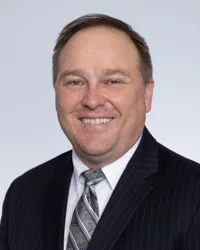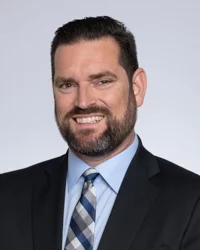Lawmakers tweaked and made last-minute changes before sending proposed legislation to Gov. Gavin Newsom’s desk that would create a pair of rebuttable presumptions that COVID-19 is industrial for different classes of workers.
Members of the General Assembly and state Senate eventually sent Senate Bill 1159 to the governor’s desk for approval on Monday, Aug. 31, which was the last day of the legislative session.
Newsom has until Sept. 30 to approve or veto the bill, and many expect that he will simply approve it. Technically, Newsom could veto it or request changes to the bill – but requesting changes rarely happens with legislation in this particular situation, and it seems he is unlikely to veto it.
The bill was classified as an “urgency statute,” which means that it takes effect immediately, the minute the governor signs it.
So what does the bill say?
CODIFIES THE EXECUTIVE ORDER
The first thing you will notice about the bill is that it memorializes most of the governor’s executive order into a statute. The executive order went from March 19 through July 5, and we described it in great detail here. Perhaps the most notable provision from that executive order is that it reduced the decision timeframe to accept or deny a COVID-19 claim from 90 days down to 30 days. (Those timeframes begin once the employer or carrier is given the DWC-1 form.) Claims that weren’t denied within 30 days were presumed compensable, but evidence found after that “Day 30” could be used to rebut the claims.
WHAT ABOUT CASES AFTER JULY 5?
The Executive Order expired on July 5. So what happens after that date?
SB 1159 creates two rebuttable presumptions.
The first is for firefighters, peace officers and health care workers who provide direct patient care to COVID-19 patients. The second presumption is for everyone else.
LET’S START WITH “EVERYONE ELSE,” BECAUSE THAT’S THE LARGER GROUP OF EMPLOYEES
SB 1159 creates a rebuttable presumption that COVID-19 is compensable, if ALL of the following criteria are met:
- An individual must test positive within 14 days of performing work for an employer at the employer’s direction and at the employee’s place of employment. People who work solely from home are excluded.
- The employer must have five or more employees.
- An “outbreak” at the employee’s specific place of employment must have occurred in the last 14 days. An outbreak is defined as either:
- If the employer has less than 100 or fewer people at a location, four employees must test positive for COVID-19 in a 14-day period, OR
- If the employer has more than 100 employees at a specific place of employment, 4% of the employees at a particular facility testing positive for COVID-19 in a 14-day period.
- (Editor’s note: This can be easily remembered as “the four and four rule.”)
Under the “everyone else” category, defendants have 45 days from receipt of the DWC-1 form to accept or deny a claim. Any claim not denied within the 45-day period can only be rebutted with evidence discovered after the end of the 45-day period.
WHAT ABOUT POLICE, FIRE, AND HEALTH CARE WORKERS?
Police, fire, and group health workers enjoy a rebuttable presumption that begins on July 6 and runs through Jan. 1, 2023. This section of the law has a 30-day decision timeframe for defendants to accept or deny claims, and the 30-day period starts with the filing of the DWC-1 form.
Police, fire, and group health workers get a rebuttable presumption that COVID-19 is industrial if they:
- Have tested positive within 14 days the employee performed labor or services at the employer’s direction.
- This applies to all firefighters, “peace officers” who are primarily engaged in active law enforcement activities, and a variety of health care workers. Health care workers include:
- An employee who provides direct patient care, or a custodial employee in contact with COVID-19 patients, who works at a health facility.
- An authorized registered nurse, emergency medical technician-I, emergency medical technician-II, emergency medical technician-paramedic.
- An employee who provides direct patient care for a home health agency.
It’s worth noting that health care employers can rebut health care workers’ claims if they show that the employee didn’t have contact with a patient who tested positive for COVID-19 in the last 14 days of employment.
BUT WHAT IF THEY DON’T MEET THE CRITERIA?
This begs the question – what happens to workers from either group who can’t meet the criteria to have a presumption? Those workers can still file claims alleging that their COVID-19 is work-related, and they must prove by a preponderance of the evidence that their COVID-19 is industrial. Based on existing case law on industrial diseases, they can do this by showing that their work placed them at additional greater risk of contracting COVID-19.
OTHER NOTABLES
- The executive order called for a diagnosis of COVID-19, followed by a positive test confirming the diagnosis. SB 1159 does away with the diagnosis part, and simply requires a positive test. The type of tests used do not include the serological (ie blood) tests that identify COVID antibodies in the patient’s system.
- The bill defines “date of injury” as the last date the employee performed labor or services at the employee’s place of employment at the employer’s direction. This seems contradictory in light of prior WCAB case law on Valley Fever, which tend to find cumulative trauma dates of injury around the timeframe symptoms began. This avoids a LC 5500.5 cumulative trauma analysis and traditional “contribution” under that statute, but it also gives defendants the opportunity to pursue concurrent employers via reimbursement theory.
- Employers have new reporting requirements. They must report any and all COVID-19 cases dating back to July 6 to claims administrators within 30 days of the date that the bill is signed into law. This includes:
- An employee has tested positive.
- The employer should not provide any personally-identifiable information regarding the employee who did test positive, unless the employee is asserting it is work-related or has filed a DWC-1 claim form.
- If the employee later claims that the positive COVID-19 test was industrially related, then the employee’s name and identifying information may be provided to the claims administrator.
- The date of the positive test. This is the date that the sample was taken, not the date of the test result.
- The specific address of the place of employment.
- The highest number of employees who worked at that same place of employment in the last 45 days.
- Employers need to keep records that keep track of the aforementioned information.
- Claims administrators are supposed to take this information and determine if an outbreak has occurred.
- The Death Without Dependents Unit will not collect death benefits from COVID cases without a dependent.
- SB 1159 expires on Jan. 1, 2023. It is automatically repealed on that date.
CONCLUSION
During the last three months, many of us anticipated that Gov. Newsom’s executive order would be extended.
For a while, some lawmakers were still pushing the idea of a conclusive presumption for various classes of workers, although it was rumored that Gov. Newsom wasn’t a fan of that. Thankfully, that was not the case.
A rebuttable presumption is bound to have factual disputes emerge within the confines of what appears to be the new law. Therefore, our initial recommendation that defendants do a strong factual investigation and timeline at the outset of each COVID-19 claim remains the same. Good facts will be employers, administrators, and carriers’ best defense against the presumption.
Still, this bill has 4,721 words, which is about 9.5 Associated Press articles in your local newspaper. And while we paid close attention to the various versions of this and other bills as they passed through the halls of the California Legislature, new issues and disputes will emerge about specific language.
With that said, more litigation is on the way. The California Chamber of Commerce reported that the number of monthly COVID-19 claims jumped from the 4,106 in April all the way up to 11,617 claims in July. Things appear to be slowing down in August, but 2020 is proving to be an unpredictable year.
Most new legislation is usually accompanied by regulations promulgated by the Department of Industrial Relations. That could have a significant impact on how these clauses are interpreted, but we presume it will take the state at least six months to draft proposed regulations.
We will continue to keep a close eye on all of this – the new litigation, the new case law, new regulations – and keep you posted.
If you are still confused or overwhelmed, please note that you are not alone – everyone has questions about the change in the law. Please note that we are offering webinars and trainings via webinar to go over changes in the law. Please feel free to contact us and request one if you are interested.
This article was written by John P. Kamin, Zane P. Uribarri, and Patrick Gorman, all of whom are experienced workers’ compensation defense attorneys at the Law Offices of Bradford & Barthel. If you have questions about coronavirus cases or any other workers’ compensation defense issues, please feel free to contact us.
Viewing this website does not form an attorney/client relationship between you and Bradford & Barthel, LLP or any of its attorneys. This website is for informational purposes only and does not contain legal advice. Please do not act or refrain from acting based on anything you read on this site. This document is not a substitute for legal advice and may not address every factual scenario. If you have a legal question, we encourage you to contact your favorite Bradford & Barthel, LLP attorney to discuss the legal issues applicable to your unique case. No website is entirely secure, so please be cautious with information provided through the contact form or email. Do not assume confidentiality exists in anything you send through this website or email, until an attorney/client relationship is formed..



